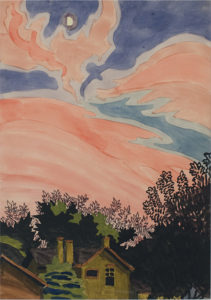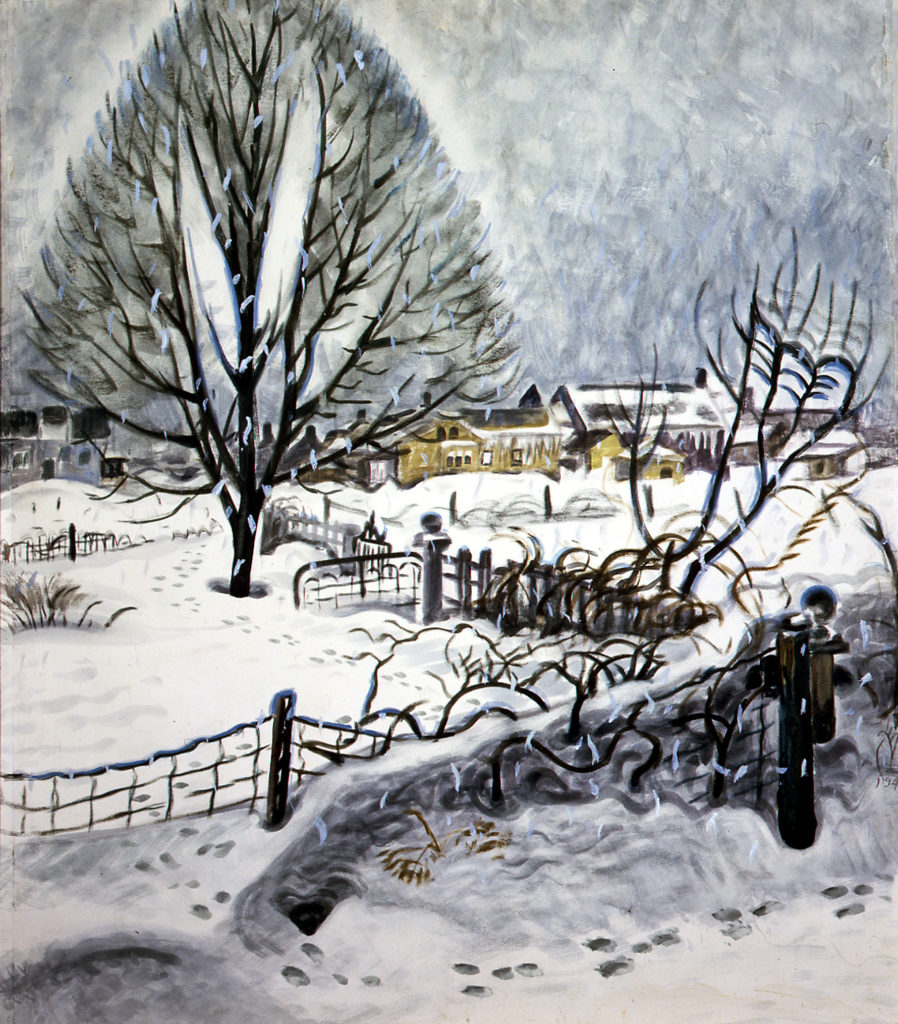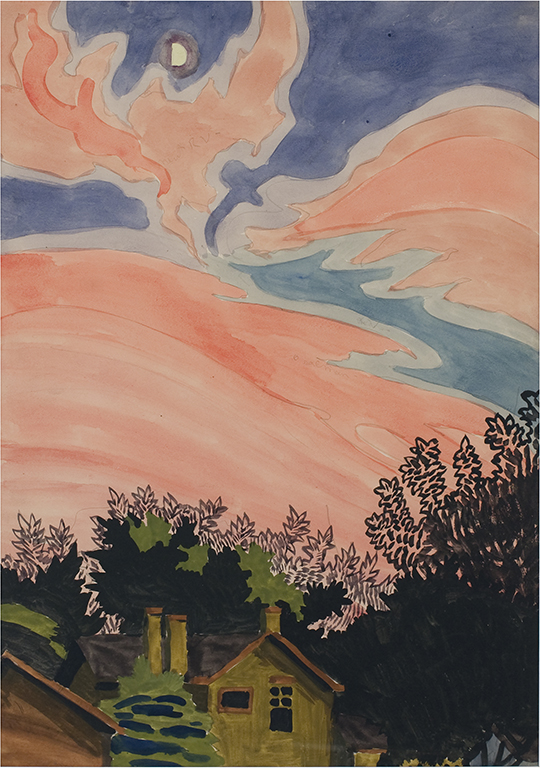
Afterglow by Charles E. Burchfield, 1916. Burchfield Penney Art Center, gift of Tony Sisti, 1979.
Everyone talks about the weather. Charles Burchfield turned it into art. He rendered its shifts, subtle or severe, in watercolors and sketches, giving visual expression to the humidity on a summer evening, or the faint warmth of the sun on a spring afternoon. His vivid depictions of the skies over his homes in Ohio and western New York are about emotion and memory as much as observed conditions. The Montclair Art Museum’s new exhibition, Charles E. Burchfield: Weather Event—featuring more than forty landscapes from over the span of the artist’s career—looks at his work through the prism of both art and science.
As early as the third grade Burchfield became fascinated by the weather notations on his teacher’s calendar, and, in his late teens, kept journals filled with precise meteorological notes. In 1915, as a student at the Cleveland School of Art (now Cleveland Institute of Art), he came up with the idea of executing “all day sketches” in which he created multiple drawings throughout a day, charting the weather changes and their effects on the landscape. And by these means, he found “the whole world of nature literally burst about me.” Even after Burchfield relocated to Buffalo in 1921 to work as a designer for a wallpaper company, and switched to a more realist idiom, weather never ceased to captivate him.

Day in Midwinter by Burchfield, 1945. Montclair Art Museum, museum purchase, Lang Acquisition Fund.
For all that they are interpretive, Burchfield’s watercolors offer a surprisingly true record of weather events. “When compared with actual weather data from the time, they are quite accurate,” says Tullis Johnson of the Burchfield Penney Art Center in Buffalo, who curated the show along with Stephen Vermette, a climatologist at Buffalo State College. “Burchfield made works that were added to at a later date, or executed over a number of years. These works are an aggregate of weather experiences. They can tell us about the kind of weather one might expect in a landscape, and they therefore can be seen as representations of climate.”
Organized both chronologically and around weather-related themes, the exhibition includes informative labels that explain the science behind a brightly orange-hued sky at sunset, or the dark clouds hovering over a red house. The artist would today “be considered an environmentalist,” says Vermette. “Burchfield’s watercolors (and his writings) speak of an appreciation for the
value of nature.”
Charles E. Burchfield: Weather Event • Montclair Art Museum • Montclair, New Jersey • to January 7, 2018 • montclairartmuseum.org

